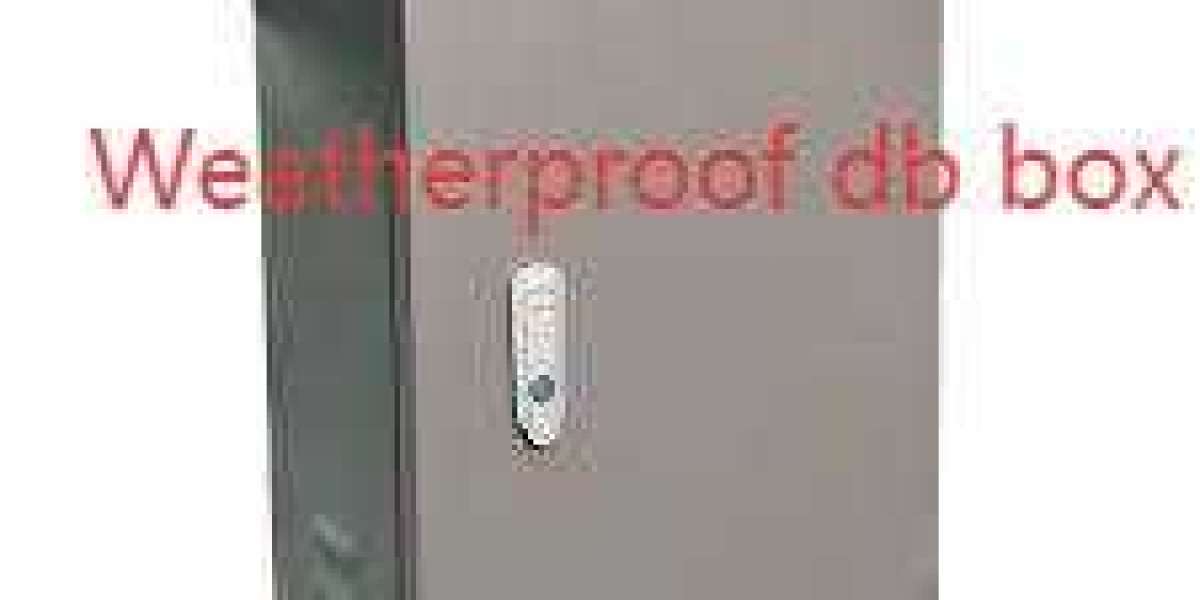A well-specified Weatherproof db box protects critical electrical connections from moisture, dust, and mechanical damage while making routine servicing faster and safer. In many installations, choosing the right enclosure reduces unplanned downtime, simplifies inspections, and helps maintenance teams work with confidence under changing weather conditions.
Why Enclosure Selection Changes Outcomes
A rugged weatherproof enclosure does more than keep water out: it preserves contact integrity, prevents corrosion, and reduces nuisance tripping. Selecting an enclosure that matches the site environment — coastal salt spray, heavy rainfall, dusty construction zones, or indoor humidity — prevents slow-developing failures that are costly to diagnose. Compatibility with cable entries, gland fittings, and mounting surfaces is essential to maintain the intended level of protection.
Design Features That Aid Field Work
Good designs prioritize access and serviceability. Features such as removable covers, clear labeling zones, and ample internal clearance let technicians work without disturbing permanent terminations. Thoughtful placement of knockouts, gland plates, and internal mounting rails reduces rework and makes upgrades straightforward. In addition, visual indicators and simple mechanical locks can speed verification tasks and reduce human error during routine inspections.
Materials, Sealing and Long-Term Durability
Material choice affects both performance and lifecycle cost. Corrosion-resistant plastics reduce weight and eliminate rust concerns, while metal shells can provide shielding and extra mechanical protection. Gasket quality and door closure mechanics are vital — a compressed, continuous seal is far more reliable than patchy or intermittent sealing. Consideration of UV stability, chemical resistance, and fastener longevity helps ensure the enclosure retains its protective performance for years.
Nante’s Practical Field-Focused Options
When brands prioritize maintainability, they usually offer modular designs, replaceable inserts, and clear documentation for installers. These options reduce the need for special tooling and permit targeted repairs — swapping a module instead of replacing the entire unit. Such an approach lowers total cost of ownership and shortens mean time to repair, which is especially valuable in remote locations or busy production environments.
Installation Best Practices to Preserve Protection
Even the best enclosure underperforms if installed poorly. Proper orientation prevents water pooling; mounting heights and drainage planning reduce splash risk. Cable entries should be sealed with appropriately rated glands and strain reliefs to avoid compromising the seal. Likewise, routing conductors to avoid sharp edges and providing service loops for future work protect internal terminations and preserve long-term reliability.
Testing, Certification, and Lifecycle Planning
Confirming an enclosure’s performance requires more than visual inspection. Look for verified ingress protection ratings, UV and salt-spray resistance test results, and mechanical cycle testing for doors and latches. Lifecycle planning — including scheduled gasket replacement, torque checks on fasteners, and periodic internal inspection — preserves the enclosure’s protective function and prevents small issues from growing into failures.
Maintenance Protocols That Reduce Downtime
Effective maintenance programs combine regular visual checks with simple functional tests. Inspect gasket compression, verify that latches operate freely, and check that cable glands remain tight. Maintain a log of inspections and any parts replaced; this data helps predict when components reach end-of-life. Training technicians to follow consistent procedures reduces human error and ensures interventions are both safe and effective.
Choosing the Right Module for Your Needs
Match enclosure selection to expected environmental stressors, frequency of access, and the skill level of maintenance staff. Prioritize modular designs where frequent changes are expected, and opt for more rugged housings when mechanical impact or vandalism risk is significant. Including spare parts in procurement and specifying replaceable modules in contracts supports faster recovery after incidents.
A thoughtfully chosen weatherproof enclosure supports reliability, safety, and predictable maintenance cycles. By combining appropriate materials, sound installation practices, and a maintenance-oriented design, operations teams preserve uptime and reduce lifecycle costs. For detailed product options and specifications, visit www.nante.com/product/







